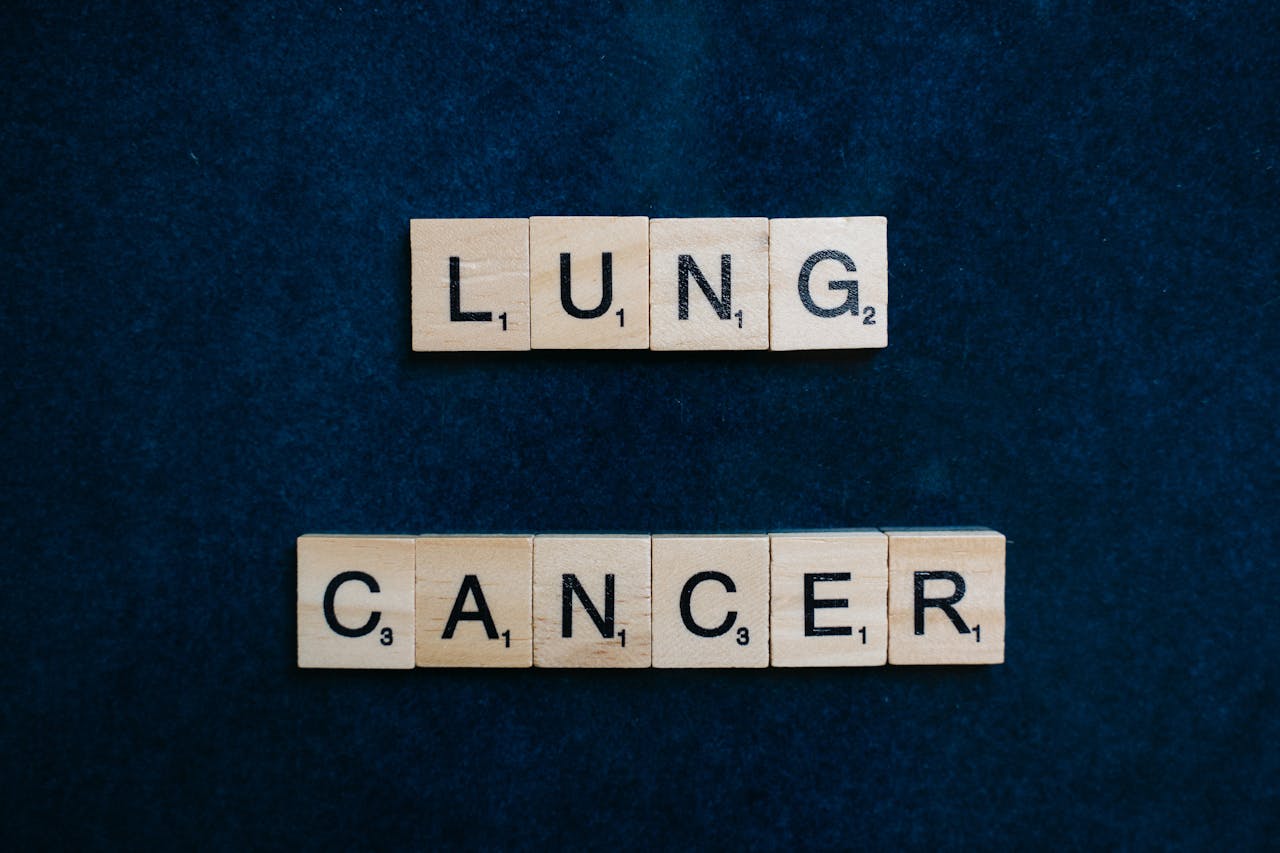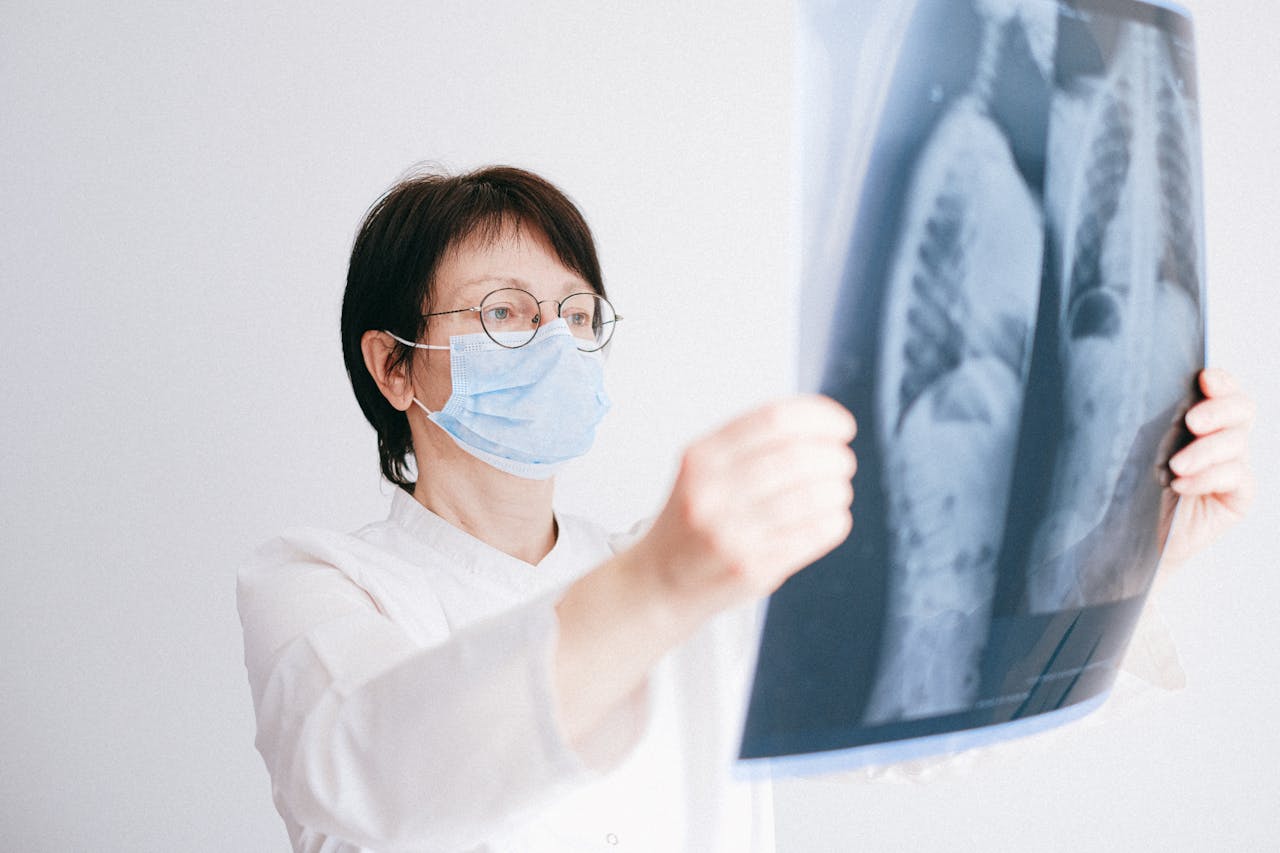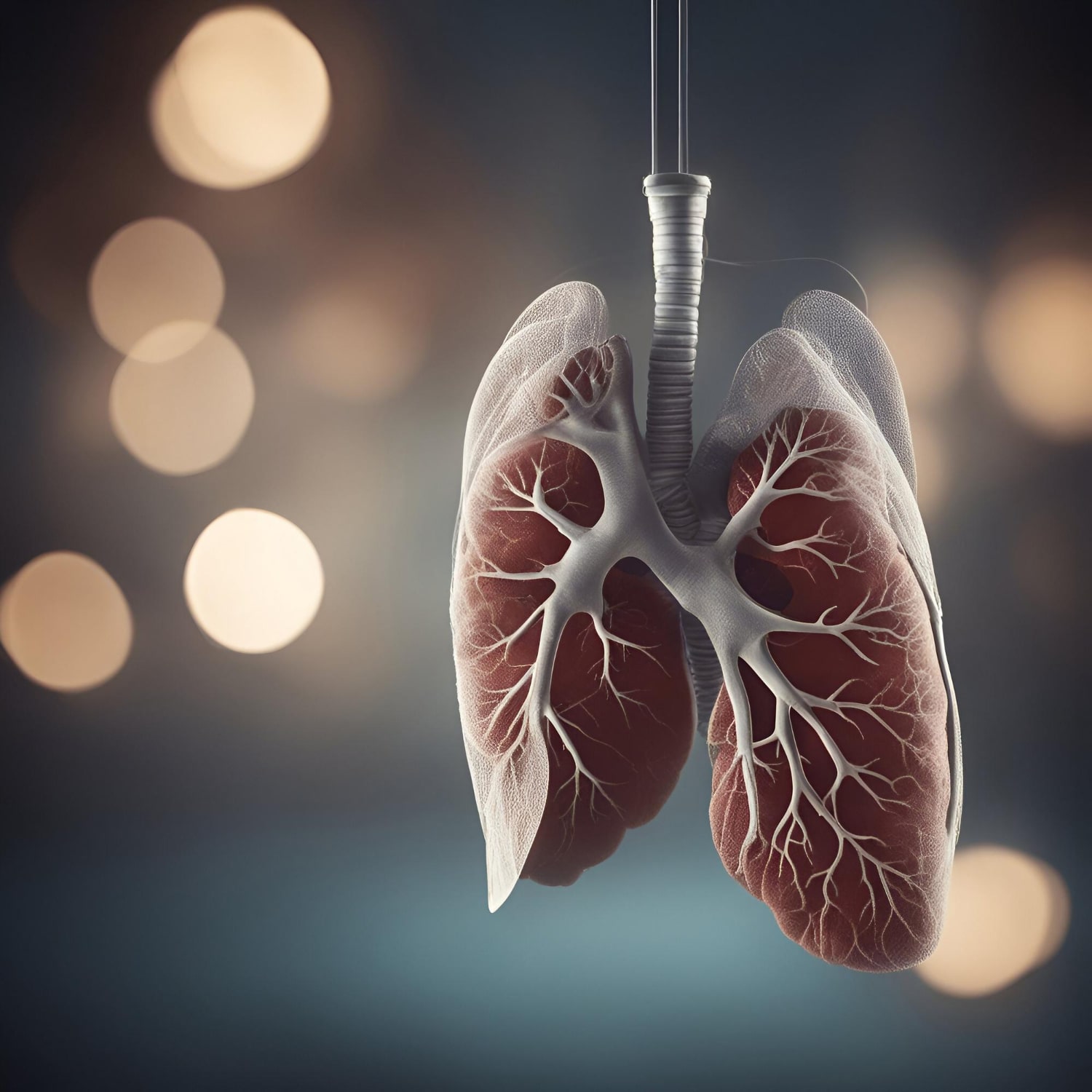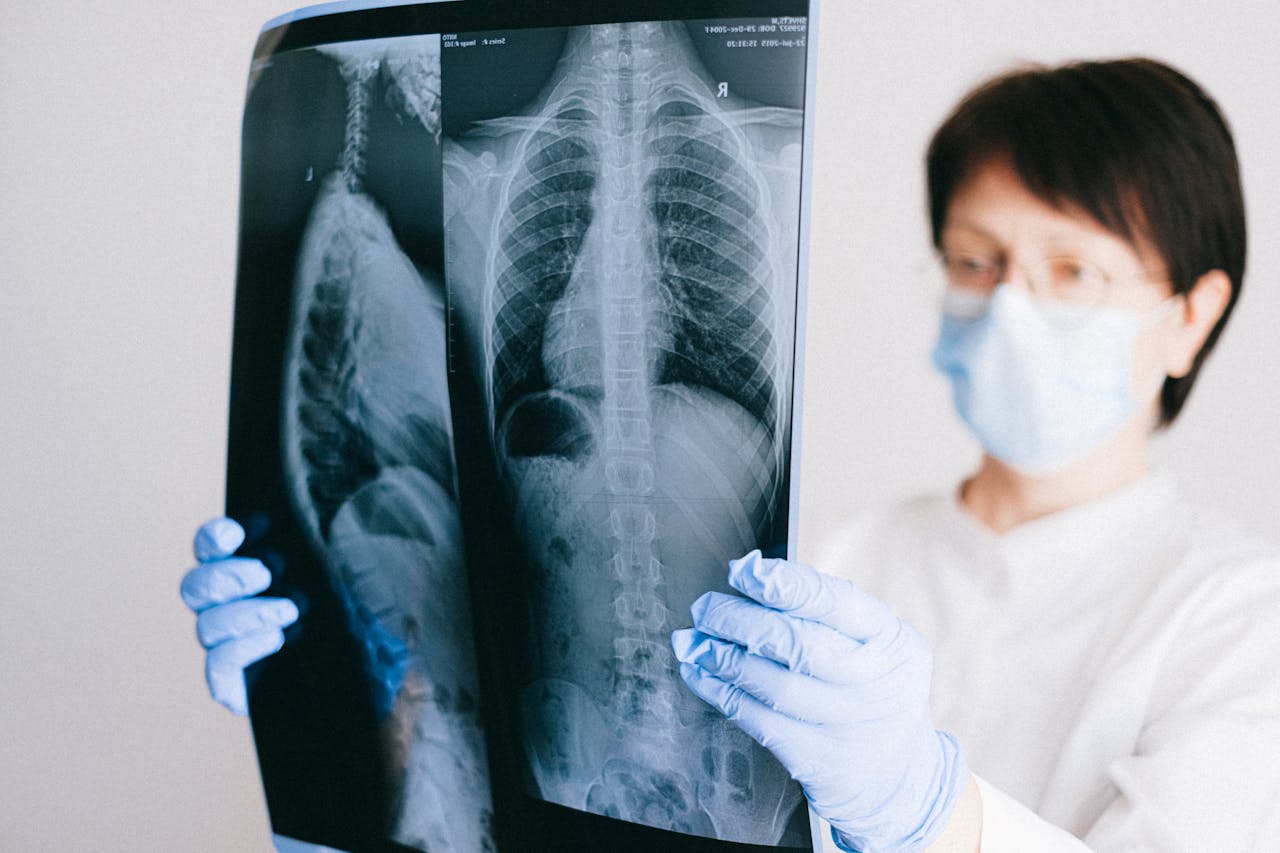The symptoms of benign lung cancer vary depending on the location and size of the tumor. Although these tumors are benign, they can still cause significant symptoms. If these symptoms are noticed, it is crucial to consult a specialist and begin the treatment process without delay. In the rest of this article, detailed information about the symptoms of benign lung cancer is provided.
What is Lung Cancer?

Lung cancer is the uncontrolled proliferation of mutated cells in the lung, forming new tissues. These tissues, known as tumors, can be located in various parts of the respiratory organ. Tumors may reside directly on the organ or on the pleura of the lung. The location of the tumor is directly related to the symptoms of benign lung cancer.
Tumors can be benign or malignant. The term lung cancer is commonly used to refer to malignant tumors. Malignant tumors can result from smoking, exposure to chemicals, and other lung diseases, with smoking being the most common cause. Tobacco products lead to malignant tumors, and symptoms of lung cancer in men and women are generally similar.
Types of Malignant Tumors
Malignant masses can be divided into different types as follows:
1 – Small Cell Lung Cancer
This type constitutes 10% of cases. It includes the most aggressive types of lung cancer, growing and spreading very rapidly. Starting treatment as quickly as possible is critical. A significant portion of small cell lung cancer cases are diagnosed at an advanced stage. Smoking is the primary cause of this type.
2 – Non-Small Cell Lung Cancer
This is the most common type of lung cancer. It progresses more slowly and has a higher chance of treatment. The symptoms of non-small cell lung cancer are not significantly different from other types and may overlap with benign lung cancer symptoms.
| Stages | Description |
|---|---|
| Stage I | The cancerous cells are confined to a limited area. The tumor has not spread to surrounding tissues and is smaller than 3 cm. |
| Stage II | The cancer may have spread to lymph nodes. Multiple tumors may be present, with the largest being under 5 cm. |
| Stage III | The cancer has started to spread to nearby tissues and lymph nodes. This is the early stage of advanced lung cancer. |
| Stage IV | This is the advanced stage. The cancer has spread to distant lymph nodes and organs outside the lung. |
What is Benign Lung Cancer?
 Before addressing the symptoms, it is essential to understand what benign lung cancer is. Medically referred to as benign lung tumors, this condition involves non-malignant tumors in the lung. The most critical characteristic of benign tumors is that they do not spread to or invade surrounding tissues and organs. However, they can continue growing within themselves and cause various symptoms based on their size and location.
Before addressing the symptoms, it is essential to understand what benign lung cancer is. Medically referred to as benign lung tumors, this condition involves non-malignant tumors in the lung. The most critical characteristic of benign tumors is that they do not spread to or invade surrounding tissues and organs. However, they can continue growing within themselves and cause various symptoms based on their size and location.
This condition, classified under pulmonary diseases, has different types:
Types of Benign Lung Tumors
- Hamartoma: A common type that arises from the normal components of the lung tissue and grows slowly. If they remain small and symptom-free, they may not require treatment and are monitored regularly.
- Papilloma: Growths caused by viruses, resembling warts, found on vocal cords and bronchi. They need to be monitored as they have the potential to turn malignant.
- Bronchial Adenoma: These tumors occur in the major airways of the lung. Some types can exhibit aggressive behavior.
- Fibrous Histiocytoma: Rarely found, these arise from lung tissue.
What Are the Symptoms of Benign Lung Cancer?
The symptoms depend on the tumor’s size and location. While some patients experience no symptoms, others may face significant quality-of-life issues. The most common symptoms include:
1 – Persistent Cough
Chronic coughing, which may worsen over time, is a common symptom. It can be productive or non-productive.
2 – Shortness of Breath
Caused by obstruction or pressure on the airways, shortness of breath is a key symptom. Its severity increases as the tumor grows.
3 – Chest Pain
Chest pain occurs when the tumor presses against the pleura or chest wall. It is particularly noticeable during deep breaths, coughing, or sneezing.
4 – Lung Infections
Blockage of airways and sacs can lead to frequent infections that may recur even after treatment.
5 – Hoarseness
Pressure on the nerves controlling vocal cords can result in hoarseness or voice changes.
6 – Fatigue
This symptom arises from the effects of the tumor and can be severe in some patients.
7 – Difficulty Swallowing
Larger tumors pressing on the esophagus can make swallowing challenging.
How is Benign Lung Cancer Treated?
 Upon noticing symptoms, the diagnostic process begins with physical examinations, X-rays, and CT scans. A biopsy is conducted to determine whether the tumor is benign or malignant. Small, low-risk tumors with no serious symptoms are monitored periodically. Surgery is considered for larger, symptomatic, or risky tumors, relieving the associated symptoms.
Upon noticing symptoms, the diagnostic process begins with physical examinations, X-rays, and CT scans. A biopsy is conducted to determine whether the tumor is benign or malignant. Small, low-risk tumors with no serious symptoms are monitored periodically. Surgery is considered for larger, symptomatic, or risky tumors, relieving the associated symptoms.
Frequently Asked Questions
Frequently asked questions and answers about benign lung cancer symptoms are listed below.
1 – What Are the Symptoms of Benign Lung Cancer?
Common symptoms include coughing, shortness of breath, weight loss, hoarseness, recurrent infections, and difficulty swallowing. The symptoms vary based on the tumor’s location and size.
2 – What Are the 9 Most Insidious Symptoms of Lung Cancer?
These include chronic cough, chest pain, hoarseness, shortness of breath, wheezing, bloody sputum, weight loss, appetite loss, and fatigue.
3 – What Are the Symptoms of Stage 4 Lung Cancer?
Advanced-stage symptoms are more severe, including chest pain, coughing, bloody sputum, and severe shortness of breath.
4 – Are There Symptoms in Stage 1 Lung Cancer?
Early-stage symptoms are uncommon, but mild coughing and chest pain may be observed in some cases.
5 – What Are the Symptoms of Stage 3 Lung Cancer?
Symptoms include coughing, shortness of breath, bloody sputum, difficulty swallowing, and chest pain. The intensity and type vary by patient.
6 – Are Stage 2 Symptoms Noticeable?
Stage 2, part of the early stages, often shows no symptoms. However, some patients may experience coughing, shortness of breath, or chest pain.
For more information on the diagnosis and treatment of lung tumors, you can contact Prof. Dr. Semih Halezeroğlu at any time.



